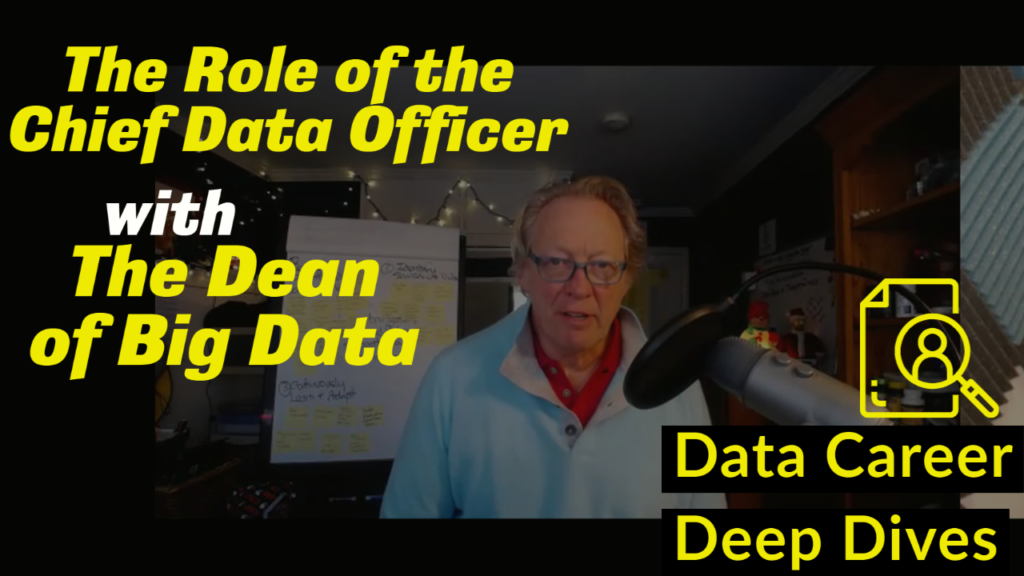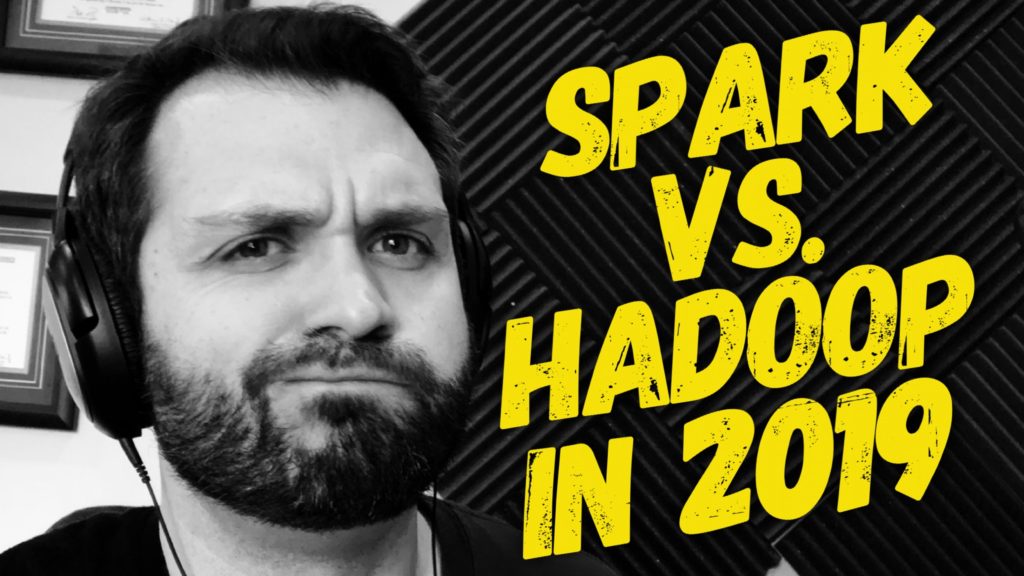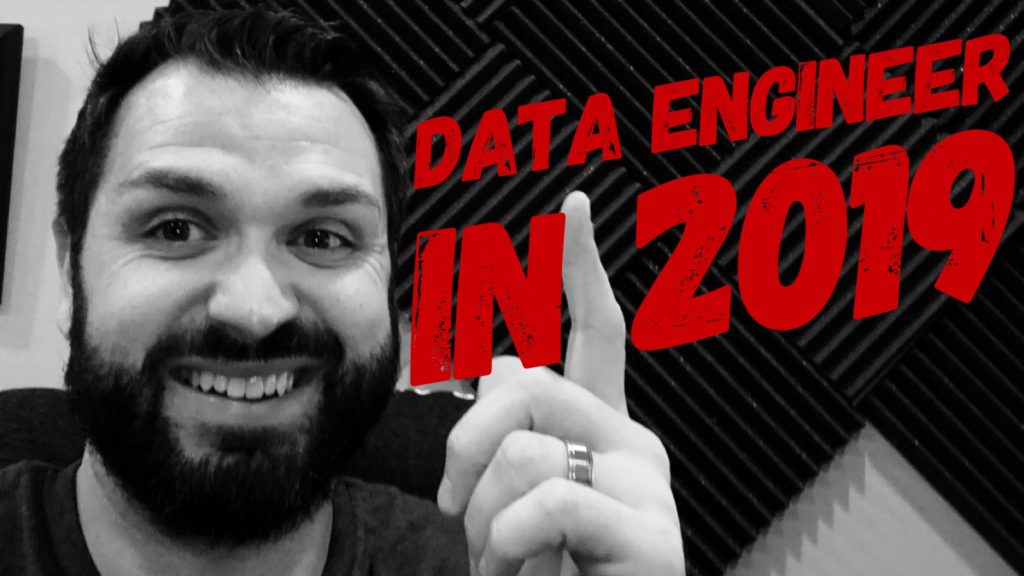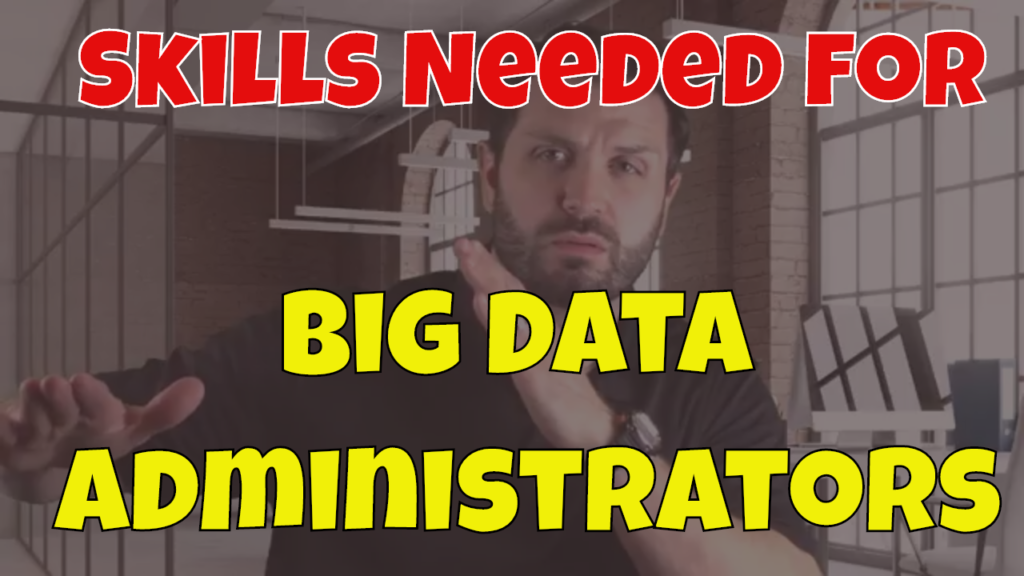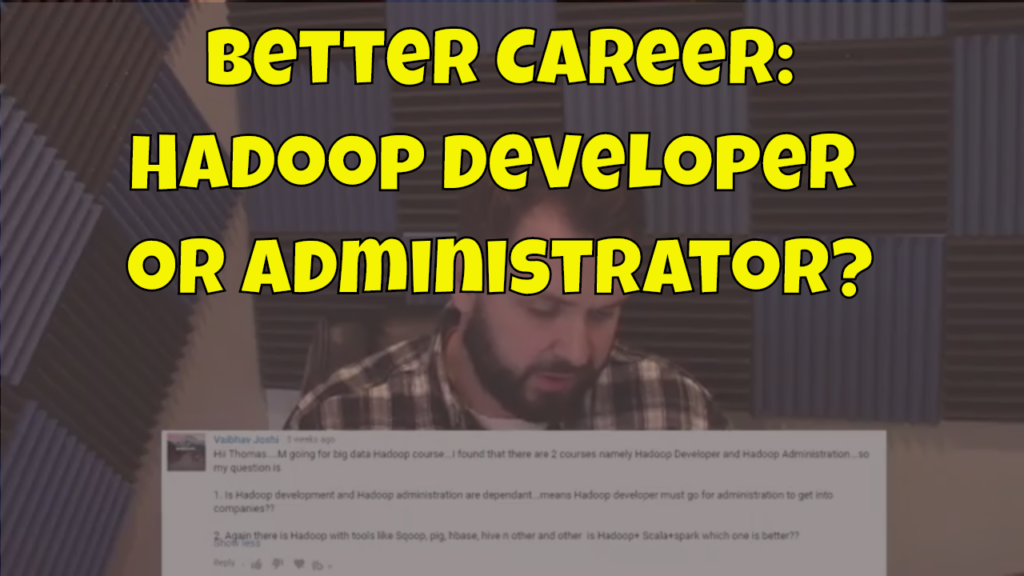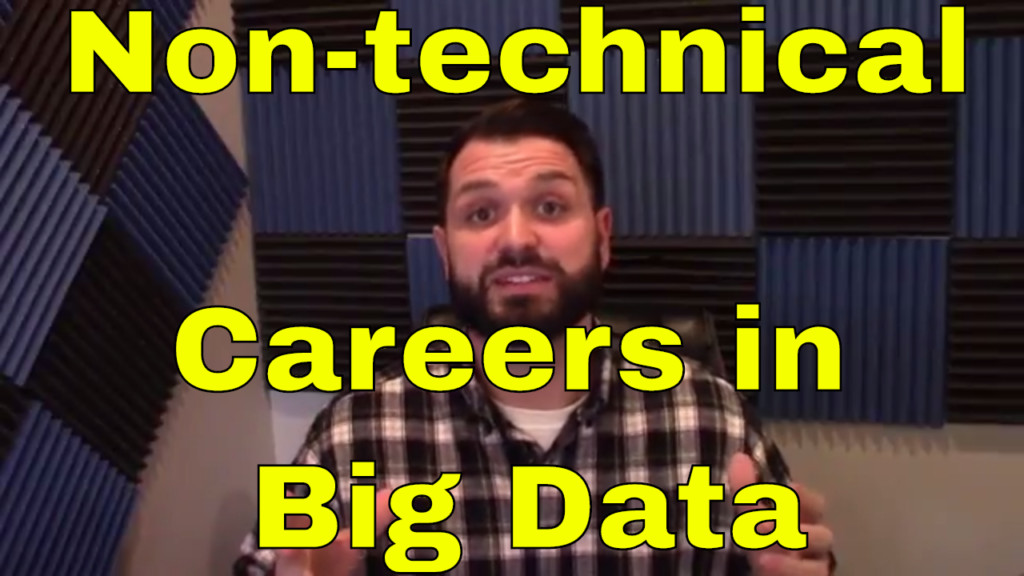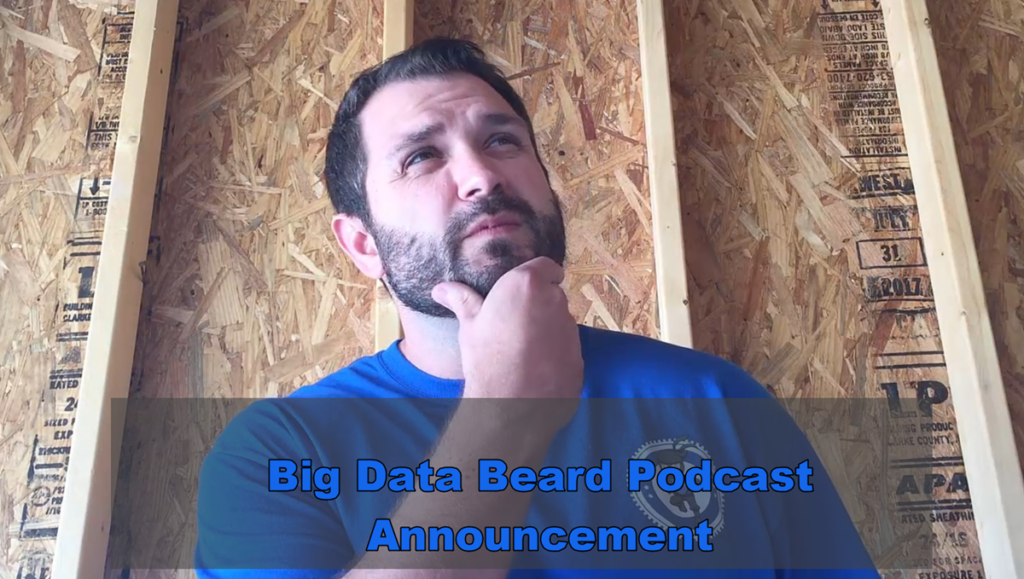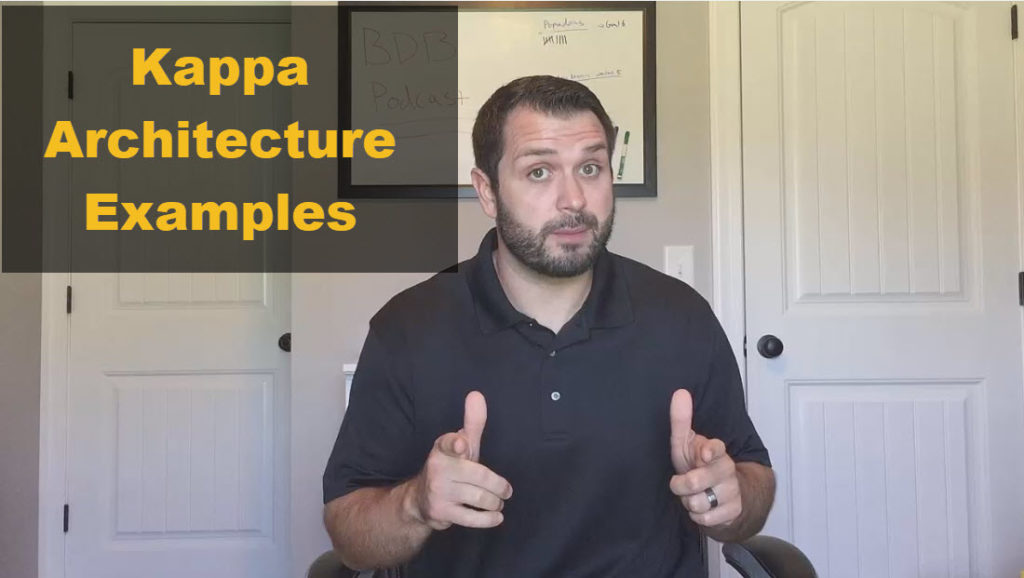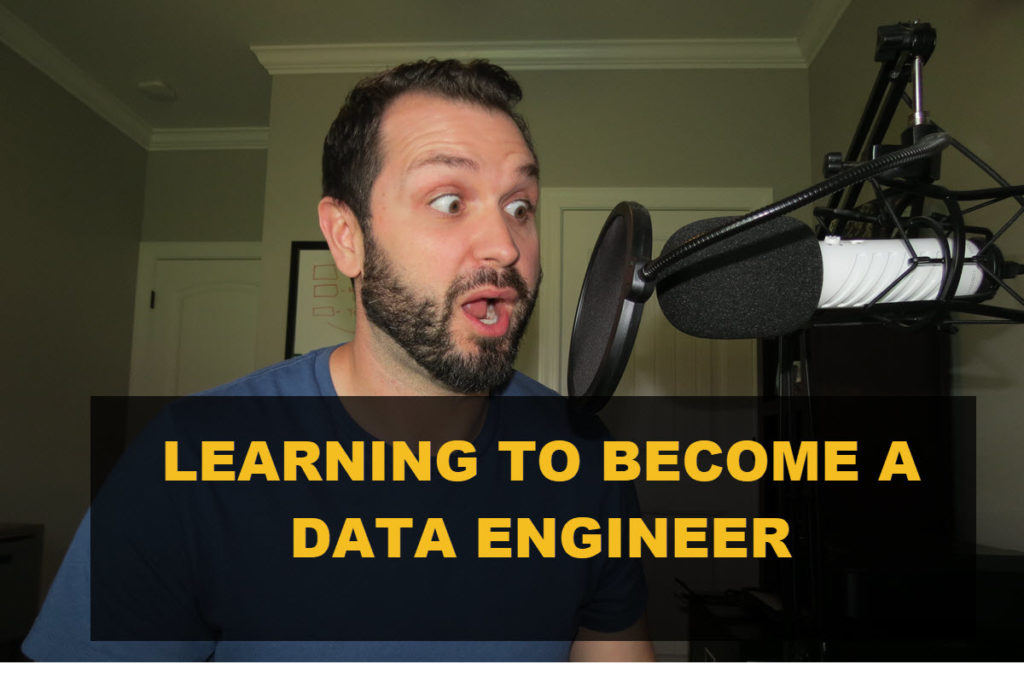Learning about the Chief Data Officer Role
In the last 10 years a new role has joined the C-suite this role is all about making the most of Data. The Chief Data Officer now sits as a C-level leader within organization whose role is to ensure the company is has the right strategy for Data. The salary average for this role is between $118K – $300K+ depending on what company you land at. Here at Big Data Big Questions we talked at length about the different roles in Data but today we are going to focus on those leadership roles in Big Data.
The Role of the Chief Data Officer with the Dean of Big Data
Make sure to watch the full video interview with Bill Schmarzo on the The Role of the Chief Data Officer.
Transcript from Otter.ai
Folks, Thomas Henson here with another episode of big data, big questions still jumping in that interview section where we’re going through careers today. Another amazing guest, folks may know this person is the Dean of big data, but bill Maher’s. Oh, if you’ve been following my channel for a while I’m done a book review. And if you’ve been following me, and you’re a data work summit, I think it was
2017 he was on stage, I had a breakout session, a lot of good stuff. So we talk about that and bring up some old memories talk about when we actually used to work together, and then talk about his newest book. So we’ll dive into his newest book. And let me just say this, this episode, make sure you tune in, he’s going to talk about what he thinks about data science, versus data engineering and the career output for those there at the end, I didn’t plan that it’s not that I’m trying to make, you know, a teaser. So you have to tune in which you should tune in the whole time. And then second off, if you’re interested in any kind of career, and maybe you’re like, Hey, you know what,
I’m ready to move on to the next stage in my career, or I want to get, you know, in the sea levels, or, you know, I want to be maybe less technical, but more, you know, business driven, listen to this episode, where he talks about, you know, career outlook for the chief data officer, you know, his thoughts around that, that vision, what companies are doing it? Well, how many companies aren’t so, so many different nuggets that you can take from this, make sure that you tune in. And then also my my request to everybody watching is one, put in the comment section here below what you think about these interviews. Second off, send me your ideas for who should be on maybe a tutor, maybe you want to come on in for the interview series, reach out to me, right, put it in the comment section here. And if you haven’t been tuning in, and this is your first time on this channel, you know, all about data analytics, but also about careers in it in tech. Right. So that’s what some of these interviews are, because data is actually touching all those I mean, we’ve had interviews on about marketing. So I will stop talking so we can get into this amazing interview.
All right, so 123 Hi, folks, thanks for joining today. We are excited. Super excited. We have Bill smartvault. On today, Bill, say hi to the big data. Big Questions. audience. Hey, Thomas. And Hi, big question. Big Data. Big Question. audience. Glad to be here, man. So I think the last time I saw you in person, we were on stage back when they used to have these things called conferences that you went to and I think you were you were coming offstage. You did a five and he did a little air guitar. back. I think we had it was hortonworks. What I think was the hortonworks conference data summit, something like that. So yeah, you’ve been? I’ve been doing well, I’ve been keeping busy and in trouble, which is what you’re supposed to do. Right? Right. Yeah, no, it’s good, man. So folks in the audience, if you’ve been following the channel for a long time, I actually did a review on bills. I think this was your second book bill. So the NBA. So Bill’s got a new book out. But bill for the folks who haven’t watched that amazing video, or haven’t heard of you? Why don’t you give us an intro, tell us who you are, what you do, and a little bit your background? Sure. So background wise, probably 40 some years in the data and analytics space. Lots of Forrest Gump moments in my life in the right place, right time. Not because I’m tall or good looking or from Iowa, sometimes you just get lucky be in the right place. So in the late 1980s, I was there at running a project with Procter and Gamble and Walmart that ended up being sort of the very first data warehouse bi project spent 25 years in the big data warehouse space when I was then recruited away from business objects by Yahoo to head up and be their vice president advertiser analytics that was at the time that Yahoo was developing this technology called Hadoop. And so I made the transition from a bi person to a data scientist. I teach at the University of San Francisco, where I’m an executive fellow, I also teach at the National University of Ireland in Galway, an honorary professor,
you know, and currently in between gigs, I just left my last gig where I was the Chief Innovation Officer, which was a most excellent adventure. It opened up all kinds of new domains and experiences, a lot of which I captured in my new book, things are just, you know, things I hadn’t thought about before they just all sudden became realized what was important. And in time as part of that realization was on the AI ml side, what we could do from an from an economics perspective, but also the power of team the power of empowering teams and how these go together.
So Bill, I want to jump right into this because you and I talked a little bit before this and we’ve talked in the past and you know
I think for my audience, we talk a ton about the technical and those are a lot of the questions that I get. But there’s so much power in, in understanding the business side. So first right in, you talk about the chief data officer for my audience, or for anybody what I mean, what does a chief data officer do? Like what is what is the CTO role? Yeah. So I think the chief data officer for most organization has become a minimi CIO. And what I mean by that is, I think the role of chief data officer and most organizations is not very fun, or creative or provocative. And I’m on a mission to actually change the nature of that role. I want that role become the chief data monetization officer, because I believe that organizations need to have a senior executive who single focus is figuring out how do I get value out of my data. So this chief data, so I’m on this crusade trying to get organizations to realize that, that there’s, there’s all kinds of unique economic value associated with data and analytics. And, and the Chief Data monetization officer probably doesn’t and shouldn’t have a technology background, I’m going to argue their background should be economics, because you think about what economics is about. Economics is about the creation of wealth and value, and how you use assets to create value. Well, that’s what that’s what data is all about. And you use analytics to convert raw data into valuable actionable customer product and operational insights that you can use to derive and drive new sources of value. So, so Thomas, my mission has been the chief data officer, you look like a CIO kind of person, don’t want that person, I want a Chief Data monetization officer who lives and breathes, who wakes up every morning and says, My job is to figure out how to get value out of that data, and is charged with with integrating across the entire organization, not just within it, but with sales and marketing and operations and engineering and everybody else to figure out where and how can we use data to derive new sources of value? No, I like that. So in this in, I’m gonna dig into this in a couple different ways. But first are all right, so in that role, so you get to decide this. So who does that person report to now? What well, who does that report to report to now? And where do you think that structure should be in the organization in Bills, Bills, most excellent adventure for your organization. Now, Bill’s most excellent venture, which is great. So I think this Rules report to the C e. o. Ci, correct right away. But I’ll see you tomorrow. So why don’t you just why don’t you make him the CEO themselves? Right? Well, I would do that. But I don’t want to get bogged down with all the crap that goes on with dealing with stockholders. No, this is a role that needs to sit at a level where this person can easily step across the organizational boundaries, and can help organizations to leverage and exploit, reuse, share, refine these data and analytic assets. If they’re buried underneath it, they’ll never get anywhere, because no one takes it seriously, from a business perspective. You stick them in finance or marketing or someplace, then you’ve automatically put them into a box. And this is the problem. Most organizations, we tend to want to put people in boxes. And once you’re in a box, it’s like a friggin cage, or you can’t get out of it. This person needs to have the authority to be able to walk across and show sales, marketing, finance, Product Management, engineering, how this one data source, for example, can power some of their key use cases, and can drive that collaboration across the different business units, so that they all can share and reuse the same data datasets over and over again. So in smartos, Most Excellent Adventure, this person reports high in the organization, and is charged with driving the overall across the organization use and monetization of these very valuable and economic or economically unique data and analytic assets. Let’s just draw on this for a second. I’m gonna go ahead and go this is why this is such an important conversation. This is why I think that this the person who runs this role, needs to have more of an economics background and a technology background. Here’s the reason why data as an economic asset, never wears out. Never depletes. And the same data set can be used across an unlimited number of use cases at a marginal cost equal to zero. Now think about that. Marginal cost equals your I have this asset. I can use it over and over and over and over again. It never wears out. It isn’t date is not the new oil. No date is like the new sun. It never goes away. It’s always provided energy for us. And so first off, from a data perspective, the thing that destroys and hinders the economic value of data, our data silos. If you can’t share data across the organization, I can’t take advantage of that economic multiplier effect. I can use that data over
Over and over again at a marginal cost equal to zero. So that’s number one is that data from an economics perspective, is unlike any other asset we ever seen in our life. And we tend to treat it like like it’s, we use an accounting mindset to try to put it into a box. No, don’t put it in a box, no boxes, we want swirls and let this thing swirl across the organization driving value. Now, here’s part two. So while data has this very unique asset that can be used over and over again, analytics is engineered correctly, will actually get more valuable, the more that they are used, right? Think about an asset you could have. Maybe it’s a car, maybe a Tesla, I love Elon Musk. When he made the statement, he made this provocative statement, which most people still don’t understand what he was meaning but as he says, he said, I believe that when you buy a Tesla, you are buying an asset that appreciates in value, not depreciate. Now, all the accounting people go What the hell does that mean? assets? you depreciate assets, you take them, you write them off? Yeah, real estate, 27 years, 27 and a half years over over time, right? Yeah, yeah. He said, Nope, wrong model, wrong frame, you’ve already lost the game, you’re thinking the wrong way about it, he say no, I can build an asset by the use of AI. And across a million Tesla cars, these cars are continuously learning, every time they turn a corner, every time they go past the path every time they go down the road. They’re continuously learning. And every night, the learning from each one of those million cars gets sucked up to the Tesla cloud in the sky and gets aggregated and then back propagated back to every car. So anything that one car learns about a particular driving situation. Now each of those million cars have learned it as well. That’s, that’s amazing, you can build these autonomous assets that continue to continuously learn and adapt. And many times the learning and adapting occurs with very minimal human intervention. So this is why your chief data monetization officer isn’t necessarily need to have a technology background, but needs to have an economics background and figuring out how how does. How do I leverage it? How do I use that to reinvent my business models? How do I use it to disintermediate customer relationships? How do I use that to totally redesign not just my business model, but the entire industries disrupt the entire industry business model? I love it. So today, right, I love the passion you gave me like five questions that I just wrote down that
you put you put a nickel, I mean, you got me going.
But so today, right. So today, we’re not in Bill’s excellent adventure today. And that’s, that’s why we’re here today to talk, hopefully, you know, to change that culture. So typically, the CDO will report to the CIO. And is that where we get challenges where it comes in it functions so marketing may be prohibitive, because they’re like, I don’t want to I don’t want to deal with the with CIOs, organization or engineering is like, we have our own kind of functionality. So it’s, it’s more of political or, you know, just just organizational structure. Bingo. Yeah, it’s it’s, you know, the the CIO, the IT organization has always been a cost center, not a profit center. And so the mindset around it has never been, how do I leverage that organization to derive new sources of value.
So you when you put the CTO or the Chief Data monetization officer into that spot, mean, they don’t look like a CIO at all, nothing they do looks like what the CIO does, but yet we’ve got this, this minimi CIO stuck in the CDO role, and they, and they think their job is to manage data. You know, your job is not to friggin manage data, your job is a friggin monetize it. So there’s, there’s a total mind shift needs to take place. Now, I’ll tell you right now, Thomas, there’s only a handful of companies out there that get this. Yeah, but but you know, if you look at the stock market, you look at the top five or six highest valuable companies out there. And you look at the amount of goodwill that’s stuck in those companies that’s comes from this monitor, you can very quickly figure out who these companies are, who have cracked the code are going, this is great. This leveraging data and analytics, to drive my business case use cases is like printing money. If no one else figures it out. That’s too bad. I just keep growing and getting more powerful. Yeah, so that was one of my questions is how many companies are doing it? Right? So for those, like you’ve got me thinking here now, so if if, you know, for those companies that are doing it, right and your CEO, and you know, I just my head goes straight to career career path and before I asked him the questions about, you know, what do we think a good CDO is the way that you’re explaining it to me is if if if our and I please, I do not want to be a CEO anybody so don’t get me wrong, but but you
You’re what you’re saying and the way that you’re kind of painting it to me like as you know, as an investor or as a board member, if I were looking at the next next CEO, I would want somebody maybe that came from one of those organizations, that that could be a natural step for a CTO or Chief Data monetization officer, similar to you see it. So it’s for so long, where you see you see CFOs being be moving into the CEO role. Is it fair to make the statement that oh, I could go to CEO? I think you look at I mean, probably the chief, the best Chief Data monetization officer out there is Elon Musk. Yeah. Right. And, you know, places like Google, these, you know, Amazon, masters of this, you know, apple, you know, Microsoft and parts of their business, not all parts of their business. These companies realize that they are in not just in the data business. They’re in the data monetization business, and they’ve cracked the code. I mean, think about for a second about Google. TensorFlow, I was joking earlier about TensorFlow, right? Exactly. The single most important technology that Google has, and the open source is now 99.99% of the financial analysts out there are going, What the heck? Why would you ever open source your most valuable technology? And here’s the reason why, in my humble opinion, why Google did it. It’s because in knowledge based industries, the economies of learning are more powerful than the economies of scale. So by having everybody out there using TensorFlow across a wide variety of use cases, TensorFlow just gets smarter and smarter and smarter. And who is the best at leveraging TensorFlow to drive data monetization? Google, so all their competitors are using their product or just helping Google to print more money? No, I like I love that. And it’s, it’s, I totally agree. And you’ve almost stoled my sales pitch or training pitch that I give to people. The the emphasis I put on it, too, is
you and I know you and I know what they what Google uses, right? They use TensorFlow, they’ve open sourced it. And it’s a it’s a great product, even if you and I were the most proficient TensorFlow people on the planet, and we didn’t work for Google, we don’t have the data stores that Google have. Right, right. And so that, you know, they’re, they’re able to get, they’re able to make their product better, kind of like what you were saying with Tesla make your product better, but you don’t have the data elements to act upon it. And they have the data sources, but they also have a different mindset. They’re their data scientists are not like normal data scientists, they give them a level of training, that I don’t think the average data scientists ever would, would ever appreciate. Understand. I mean, most of their senior data scientists at Google are taught design thinking, you’re gonna think, design thinking that has nothing to do with building neural networks, anything I said, you know, guess, right? It’s true, right? It’s they they understand, in detail, what it is they’re trying to do first, and then figure out what data they need not figure out not to say, oh, here’s our data I have. So what problems can I solve? No. How do you distinguish signal from noise if you don’t know the problem you’re trying to solve? And I think what you see from Google least in the folks I’ve met there, and I’ve not met a lot, but the ones I’ve met have been pretty impressive. They’ve got a laser focus on trying to figure out what is it we’re trying to do? And then what data do we need to support that? They’ve reversed the process? Everything’s about, obviously, to gather a bunch of data. And then here, tell me what’s valuable in data? Well, I mean, again, how you distinguish signal from noise and the data, if you don’t know what you’re trying to do. So they’ve taken it. And yeah, they got brilliant tools, and they got great datasets, but they have a different mindset is kind of like what Elon Musk did, he’s got this whole, I mean, if you want to change the game, change your frame, look at something different than your competition does look at it differently than than your competition. And you’ve got a chance of providing some very unique, differentiated compelling value. No, I think that’s important. And one of the things that, you know, I come more from the software side, as a software engineer. And you know, we we say this all the time, but we don’t act upon it. I don’t even act upon it sometimes. Right? Like, we we think, first and foremost, what is the new framework I can use versus what is the right framework for the job, same thing in data, right? Just just flipping, what do we want to solve? And let’s go find the data elements to solve that. So I’m going to give a homework assignment to you to your listeners, and I’ll provide the link for it. We developed a tool, design thinking tool called the hypothesis development canvas. And what it does is it articulates the problem we’re trying to solve before we ever put science to the data. So what problem you’re trying to solve
What are the metrics and KPIs against what you’re going to measure success in progress? Who are the key stakeholders need to buy in? What are the asset models you need to put in place? What are the decision you’re trying to drive the prediction support that data sources we might need. And even, even probably the most important part is, what are the costs of the false positives and false negatives. If you don’t know the cost of the false positive false negatives, you never know if your model is good enough. But yet, we sort of let that kind of flutter through. So we build this hypothesis development Canvas, we do it through an envision exercise, you probably remember me talking about envisioning exercises back in the day, I still do those, they’re still invaluable in driving alignment across the organization to figure out what problem we’re trying to solve. We put all that into the hypothesis development canvas. Now the data science team knows they’re trying to do they know how they’re going to measure success and progress. They know what decisions the customer they’re trying to make. They know what predictions they need to go, they now have a framework for figuring out which of the 1000s of different data sources are probably most important in solving that.
Yeah, no, I like that. And we’ll definitely make sure we link it here in the description, and in the show notes. So I’ll make sure that we repost that. So I want to I want to go back, I think we’ve set the stage. And you know, the way the way, I’m here in this conversation today, I’m pretty excited about it that, hey, there’s a career path for folks that like data that could possibly be CTO. Now, this is Thomas, and Bill saying that, but I think we have a pretty good a pretty good handle on it. So it may or may not work out. But what would you say to somebody who’s maybe they’re in college watching this, maybe they’re just wanting to change careers, or even you know, we even have some folks who are, who are just just moving into college.
Hey, this sounds interesting. I like the business side. I can be a peacemaker. What How do I become a CEO? So
I’ve done a couple of lectures in the last six months to a number different universities to to graduating seniors, basically with that same question, maybe even more broad, they’re like, Well, how do we? How do we future proof our career, we had COVID. Now, there’ll be something new next year, something new following that there’s always going to be change and challenges in front of us. Some of them may be digitally undo. Some of them may be, you know, healthcare induced or whatever pandemics we there’s the world is constantly changing.
I believe there are three skills that everybody needs to learn. When I teach my class. My class focuses on every one of my students, whether they’re a data scientist, an MBA student, software engineer, we work on these three skills, skill number one, analytics, you need to know what you can do with analytics. And you don’t necessarily need to know how to how to code, a TensorFlow or a neural network. But by golly, you better understand how it works and what you can do with it. Right? So you need to understand what are the things that I can do using reinforcement learning using unsupervised or supervised machine learning? What are the things that these things do so a an understanding of the application of advanced analytics is critical for everybody, whether you’re a nurse, a lawyer, a barista, a tech, whatever you might believe B, you need to understand it. That’s number one.
Number two, you need to understand economics, you need to understand where and how value is created. Or you need to understand how value is created with customers how it’s created with the operations within markets within products, you need to have a solid foundation, not in finance, as much as in economics, and understanding a lot of the basic economic concepts, you know, economic multiplier effect, and postponement theory and all these things supply and supply and demand a lot of basic concepts come to bear in the area of around economics, and then the third mixin. So you don’t do these simply mix these all together. The third one is design thinking, which is learning to speak the language of the customer. And the single most important tool that I think anybody should learn from design thinking is how to create a customer journey map. Think about your customer. Think about where they go through the path that they take, from the minute they have an epiphany as they want to do something all the way through the after goal. And then identify all the decisions that user has to make to support that journey. and identify in that journey, which are the points of high value or value creation right around which I want to make sure I’m monetizing. And what are also the points of that, you know, value destruction, the hindrances, because you might find that those those points have hidden hidden acts of hindrance are also monetization opportunities. And so what you do is you you really have to learn what a customer is because at the end of the day, the only person that provides value, the only person who provides who has ink in their pens is a customer. Yeah.
So I want to learn more design thinking Do you have a recommendation for a book or a couple of blog posts or anything that
Can oh god yeah, I, I’ve written a lot about it. I think my my third book, which is called the art of thinking, like a data scientists
goes into a lot on design thinking with respect to data science.
That That book is, I think it’s only available on my personal website, Dean of big data.com. I’ll make sure to link it here. Yeah, I’ll send a link to the reason why I self published that is I want to be able to see when you publish, which people don’t realize minute you publish, you give up distribution and pricing rights. It’s not in your control, I, there’s no book here, I had no say what this price that it was decided by, and how it’s distributed, right? And discounts and all that kind of stuff, I have no, say, I wanted to book, a workbook that my students could use that I could have at a price point any student could afford. And so it’s like 999, that’s $9.99. And also 900 900 $999. Right? My goal here is every time somebody buys that book that buys me two visits to Starbucks. So that’s my goal. That’s my Starbucks fix. But it’s got a chapter in there about the hypothesis development Canvas is a chapter about design thinking. And it’s really the entire workbook is how do you get people to think like a data scientist, again, regardless of your profession, whether you’re going to be a nurse, or a doctor, or physician or engineer, or technician, or whatever you’re going to be tomorrow’s world’s gonna require everybody to think like a data scientist. No, I think that’s so important. And, Bill, just a little, little information for the audience. Before we were kicking off recording, I told bill that was like, Hey, I think this is an important topic to talk about, just on the value of the business side. And, you know, Bill bill just gave, you just gave some of the points and my, my learning through through through my career as a software engineer, and in, you know, moving, you know, moving more into business development product side, my journey, my journey came because I wasn’t the best software engineer, and even even some of the best software engineers started realizing on the team, if they couldn’t explain to our customer and your customer, your customer could be, you know, I was, you know, I was I was a contractor then, but you may not have a customer, you may only do internal products, but you have a customer and so, you know, the things that bill’s talking about here are super important, because you’re always you’re always having to sell and having to communicate your vision, how else are you the projects that you want to work on, you know, the only way to continue to get those funded or to get those, you know, sponsored by your leadership or your customers, is to be able to show them your vision and be able to communicate that. So, Bill, I mean, that’s, I mean, it’s it, I think it’s huge to our audience, and I hope they’re still tuned in, when they when they found out we were going to talk business, right, like me, but that’s the point like this is, I mean, this is this is important stuff, you know, to be to be able to understand how to convey these projects, I’ve, I’ve had the great fortune of having managed a couple of data science teams, truly outstanding data science teams. And when I watch their, I know it gets them excited. And what gets them excited is when they’re talking to a customer, they’re able to help the customer solve a really wicked problem using data science. And then that solution gets put into operations. It isn’t just having a great idea. It’s seen it actually in the works. And that’s my teams I’ve worked with, I’ve been very fortunate they light up when they know that their ideas are actually helping, you know, help this company do this more, you know, more efficiently and better. So again, you to be effective, it is not just about having great ideas, it’s about being able to put those great ideas into work and provide value to people, that’s least for me, and for the people I’ve associated with. That’s where it gets fun.
So
part of our audience as well to you know, we do we do have folks that are, you know, executives or leaders or, you know, directors within their organization. Exactly. Get off your ass.
So, let’s say, Well, I mean, that’s where we’re going with this question. So say they’re watching this and they’re like, Hey, I like Bill’s excellent venture. I don’t think my company is one of the one of the handful that are doing it, right? What are the steps that I can put in place to start attracting talent? Let’s just start with the talent portion. How would great data we want to start building a great data team? How do I attract that talent?
great talent comes to organizations that empowers them.
great talent wants to be at the frontlines providing value and don’t want to sit in a box but want to be a part of a team that’s creating swirls I I call it
organizational improvisation. And what I mean by that promises that people want to work in a situation where all of their skills are being tested and pushed. They want to be in a city like a great soccer team, right? Think about the women’s us women’s Olympic soccer team. write poetry.
Ballet on the field, working in combination. Was there a coach above them Yellen. You know, Susie move here? JANET, go here, right? No, no, they had been empowered as a team and as individuals to accomplish their objectives. And that’s what they did. And so I think what it all starts with empowerment, I have a, I have a little thing when I finished my my, my video blogs in the morning, I always ended by saying hashtag culture of empowerment, yields hashtag culture of innovation, when you can empower people, when you can allow people to try things, test things, fail, learn and try again, you will get the best people. And better than that, you will get the best out of your people when you let them do what they can do. Again, this idea of I’m I’m very much against the organizational box, where he takes somebody who’s really brilliant, we stick them in a box, we put them in that cage, and they’re never let out bullshit, right? People are brilliant, they can learn they can synergize, they can blend, they can they can take one plus one equal three and seven, you can take diverse perspectives and diverse opinions, and you come up with something even better and more powerful that friction is how tires move, right? It’s all these things. But yet we senior management wants to go out and hire a data engineer and put a data engineer back by golly, no, right? You think about a data science team, you got data scientists, you got data engineers, you got an ml engineer, you’ve got business subject matter experts, my team is the design thinker amongst it, you have this team. And here’s the beauty of a team. Everybody, at some point in time, will be forced to have to lead. Everybody takes turns leading, depending on the task at hand, right? Everybody has to be prepared to lead everybody is prepared to work together, you’re you know, it’s it’s like playing.
It’s like playing a game
or childhood. Yeah, it’s like playing a game boy. Right. And, and when you play Final Fantasy legend to you soon realize it that way to win the game is to have a very diverse set of characters, who each will take different turns leading at different points in the game. That’s the way teams work. So senior executives, if you want to get the most me, you’re talking about hiring the best people, you probably have some pretty damn good people already in the company, you just had never empowered them. You’ve never given them the ability to try things. And by the way, if you don’t fail enough, you never learn enough. If we believe the economies of learning are more powerful than the economies of scale, then you have to let people fail. Just know you can’t fail stupidly. And you have to learn from those failures. That’s how you learn you try things out, you, you you nurture that natural curiosity to see what what happens. I blend this data set with this data set using the sort of ml AI framework blows up. All right, well, I didn’t work very well document share that. Try something different. That’s how we learn. I used to so one of one of my early managers in my career, and I love the saying in the way he kind of treated it. Because he said that, hey, I’ll only be mad at you. As long as you know, you know, no mistake or no making a decision, as long as you don’t make a decision that a first grader could make. Think I just blew the same. But I knew what he was trying to say. Right? Like, as long as it wasn’t like you said just something, something, something, something you could prevent, or something that you know, didn’t put a lot of thought so well. Here’s the interesting part of this talk. So I believe that greatness is in everyone. But every now and then you’ll have people who aren’t ready to step up towards that. Yeah, I, I had I had I had a really powerful data scientist, really, really smart. just could not step up, had to let him go. It wasn’t the right fit for him. He was struggling, he was not happy. He was bringing the team down. He had to be let go. And he came he went found another great job somewhere else that we could sit into a box and do what he wanted to do. He did he wanted to be in the box. He didn’t want to be in this world. He wasn’t ready. He didn’t want to lead. But I tell you, I I believe that greatness is in everyone. And it’s up to management, to basically unleash that greatness to let the best come up. And by the best managers out there. If you all your all your people are doing great things. Suddenly you look like a genius as a manager, when all that you’ve done is you basically have unleashed that greatness in your people. Yeah, no. So I like where we’re going here. So I’m gonna continue on this path. So for that director for, you know, like I said, Maybe we’ve got some executives of watch I’ve gotten I’ve gotten a few interesting questions and emails. So we know how to track that a talent and they’re on board where we’re doing the right things where
Empowering, we’re making sure that we have diverse thoughts and, and leadership within our team, everybody’s stepping into lead. How do I manage that up? Right? How do I maybe maybe this person is the you say the mini, the mini CIO or the mini mini CIO? If we’re stuck there, how do I make that? How do I how do I managed to get that cultural change so that once again, the goal is to become that handful of companies, right. So the The key is to find a friendly on the business side. That is somebody on the business side, who’s trying, it was in one of two modes. And I when I was in sales, I was a big fan of the Miller Heiman selling technique. And he used to say that they’re the people in two modes are the people who want to sell to people who are in growth mode. And people who are in trouble mode, people who are in growth mode, know there’s something bigger they can do, they just need help to get there. People are in trouble motor people who know they’re in trouble. Know, if they don’t switch things around, they’re soon going to be out on their tail. I like both those kind of people, because they’re now open to suggestion and trying to do things differently. And so you find a friendly, hopefully, probably have somebody more in the growth mode, somebody who’s No, I had a situation with a chief marketing officer, and a brand new to the company wanted to put his fingerprint on the company. We were releasing a brand new product. He wanted to we had you know, how do you focus your scarce sales and marketing resources to around the right customers for that product? Right. So we worked with him in his in his marketing team and the brilliant CIO, we had we put together a plan, we launched this and the first year generated an additional 28 million in revenue, right? Think about that 28 million revenue, from one use case. 28 minutes, like that’s like found money. It’s like walking down the street and Stumbling on a bag of money go, oh, here’s $28 million for you. Right? I’ve never found that on the street.
If I had, I wouldn’t be talking to you, I’d be saying that’s fine. But that’s that’s what it’s like, right? So you find a friendly, who has a vision, and you help them you make them a hero. Or you make them the champion. And then they’re out telling the rest of the seat that the CXO that Yeah, I just ran this use case. And I’ve gotten it’s my first one, he got 14 more to do the first one, you’ll have $28 million in additional revenue. And you’ll watch all the draw jaws and the executive go. What would you guys do? Right? Then what happens? Of course, success breeds success, which is interesting. So first off, find a friendly, make them a hero, make sure they’ve got a problem is big enough, right? I love the company and say, well, is my is my data big enough for big data? No, that’s the wrong question. Is your problem big enough, right? So $28 million.
Once you’ve done that, and you’ve started to convince the organization,
person by person is value, the next biggest challenge you’re going to have is on governance to make certain you’ve got a process put in place. So people are, are running their ideas through you. Because what you don’t want to do is have somebody go well, I’m you know, I can’t wait for your team to get to me, I’m gonna hire my own team and do my own thing. Well, data silos, right kills the value of data, orphaned analytics, I can’t I can’t continuously learn and adapt if I have orphaned analytics. So you have to have a rigid governance organization, which means this Chief Data monetization officer, not only are they a collaborative trying to step across borders and makes shit happen, but they also got teeth. And they’re not afraid to be a son of a bitch to walk across and say, no, we’re not going to have these bands or random data scientists in the organization, they’re going to sit in our organization, you’re going to work it through our governance process, because whatever you learn from the project, you just did, we want to make sure that every other part of the organization learns, because the economies of learning are more powerful than economies of scale. So the Chief Data monetization officer needs to be on one hand, very friendly, has the carrot can make you more money. Here’s $28 million per use case. It’s got a big old stick with a nail in it seen if you don’t play by the rules, buddy, you’re out of here. Yeah. So I hadn’t I hadn’t seen it from a governance perspective like that. So you know, building that value, I mean, and essentially what in my head the way that I’m kind of walking through it is, alright, so I build this amazing team. And we start you know, we find a friendly and essentially, you’re building your brand internally. Until, you know, you have you just have this rush of so many different opportunities within your organization. And then I guess I never thought about it from the perspective of organizations start to fall down when when when they start building their own. You can’t have four four centers of excellence, right. I know. Right? Right. We we saw this problem in data warehousing, right. We started off with data warehousing, but data warehouse was really hard to build. They were really hard to build so businesses couldn’t afford to wait for the data warehouse to get to them. So they built their own data Mart’s
